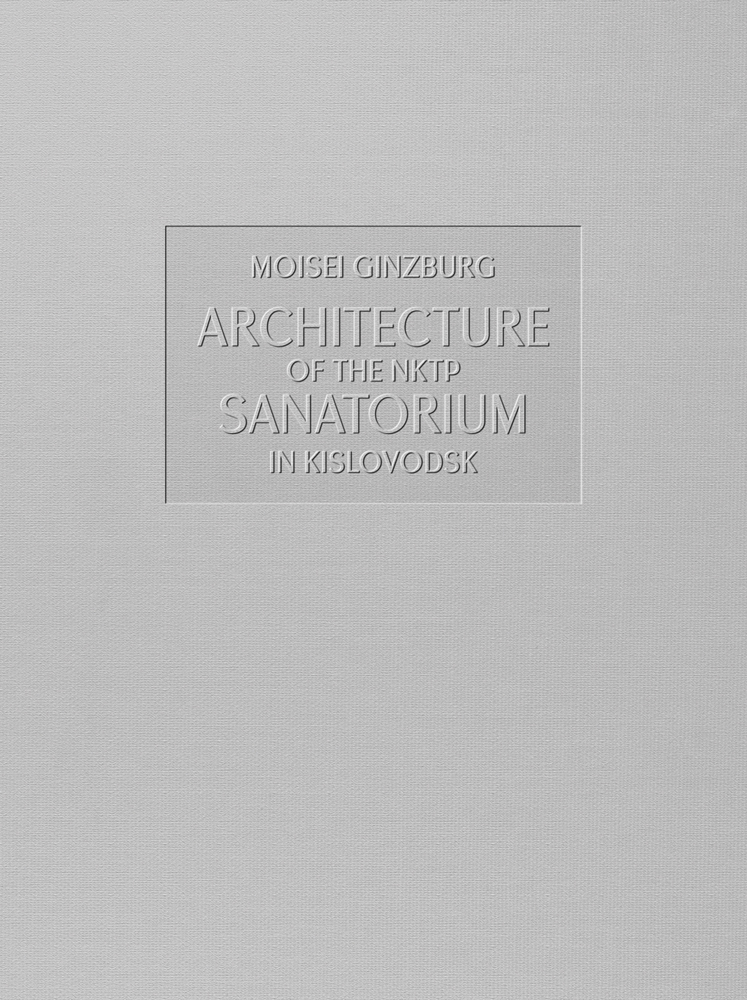
Architecture of the NKTP Sanatorium in Kislovodsk
- Third in the series of facsimile publications of the work of one of modernism's most famous architects, Moisei Ginzburg, following on from Dwelling (2017) and Style and Epoch (2018)
- Published in partnership with Ginzburg Architects, now involved in the restoration of Narkomfin (1929, Moscow) - Moisei Ginzburg's Constructivist masterpiece
- Previously unpublished in English and documenting the building of a sanatorium complex in the modernist style at a time when architecture was subject to Stalinist diktat
The NKTP (People’s Commissariat for Heavy Industry) Sanatorium was commissioned in 1934 by Grigory Ordzhonikidze, one of Stalin’s closest allies and head of the Commissariat for Heavy Industry (he committed suicide after falling out with Stalin in 1937, the year of the sanatorium’s completion). Despite the prevailing ideology that sought to outlaw modernism in favour of Stalinist neoclassicism, architect Moisei Ginzburg, with a team that included Ivan Leonidov, Evgeny Popov and Nikolai Paliudov, succeeded in creating an architectural ensemble that essentially retained its modernist integrity – and today remains a masterpiece of 1930s modernism – while making only minor concessions to the new Stalinist orthodoxy. In the early Soviet period, Kislovodsk in the northern Caucasus became known as a centre for health spas and sanatoria – ‘palaces of health for the workers’. Ginzburg’s sanatorium still functions as a therapy centre, and retains many of its original features, including windows, light fixtures, some of the furniture etc. This first English-language publication of the original book documenting its creation is an important addition to the Ginzburg canon.
Contents: Introduction; Architectural issues; Construction and Organization of Engineering.
• Third in the series of facsimile publications of the work of one of modernism’s most famous architects, Moisei Ginzburg, following on from Dwelling (2017) and Style and Epoch (2018)
• Published in partnership with Ginzburg Architects, now involved in the restoration of Narkomfin (1929, Moscow) – Moisei Ginzburg’s Constructivist masterpiece
• Previously unpublished in English and documenting the building of a sanatorium complex in the modernist style at a time when architecture was subject to Stalinist diktat
The NKTP (People’s Commissariat for Heavy Industry) Sanatorium was commissioned in 1934 by Grigory Ordzhonikidze, one of Stalin’s closest allies and head of the Commissariat for Heavy Industry (he committed suicide after falling out with Stalin in 1937, the year of the sanatorium’s completion). Despite the prevailing ideology that sought to outlaw modernism in favour of Stalinist neoclassicism, architect Moisei Ginzburg, with a team that included Ivan Leonidov, Evgeny Popov and Nikolai Paliudov, succeeded in creating an architectural ensemble that essentially retained its modernist integrity – and today remains a masterpiece of 1930s modernism – while making only minor concessions to the new Stalinist orthodoxy. In the early Soviet period, Kislovodsk in the northern Caucasus became known as a center for health spas and sanatoria – ‘palaces of health for the workers’. Ginzburg’s sanatorium still functions as a therapy center, and retains many of its original features, including windows, light fixtures, some of the furniture etc. This first English-language publication of the original book documenting its creation is an important addition to the Ginzburg canon.
- Publisher
- Fontanka
- ISBN
- 9781906257309
- Published
- 9th Jan 2020
- Binding
- Hardback
- Territory
- USA & Canada
- Size
- 8.00 in x 11.00 in
- Pages
- 88 Pages
Our Catalogs
Browse Our Books
Please log-in or create an account to see your recent items.